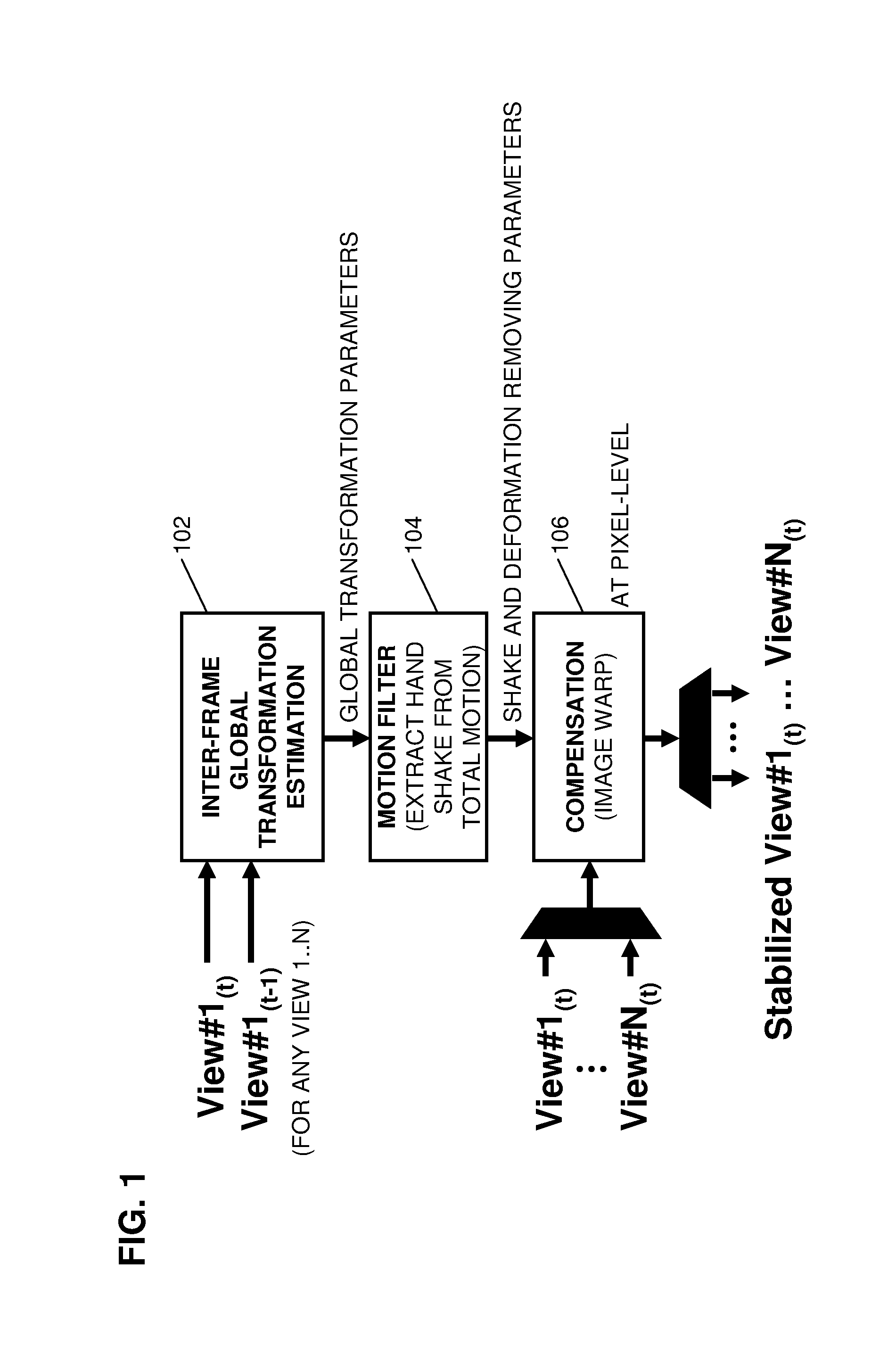Digital video stabilization for multi-view systems
a multi-view system and video data technology, applied in the field of digital image stabilization of video data, can solve the problems of increasing cost, user operation of video imaging devices, in particular hand-held recording devices, can produce displaced or distorted image data,
- Summary
- Abstract
- Description
- Claims
- Application Information
AI Technical Summary
Benefits of technology
Problems solved by technology
Method used
Image
Examples
first embodiment
[0021]FIG. 1 depicts a flowchart ;
second embodiment
[0022]FIG. 2 depicts a flowchart ;
third embodiment
[0023]FIG. 3 depicts a flowchart according to a
DETAILED DESCRIPTION OF EXEMPLARY EMBODIMENTS
[0024]Embodiments of the present invention provide a new and patentably distinct methodology to perform DVS for multi-view imaging systems. Embodiments of the present invention enable DVS on 3D video, as well as improved 2D (two-dimensional) DVS, by using multiple simultaneously-recorded views for the process. The views input to the embodiments may be from stabilized cameras, but more generally any cameras may be used. The input views are of substantially the same scene, but typically captured from slightly different positions. The video camera is generally capable of capturing image data for one or more frames, and may be linked to a processor and a memory for processing image data and outputting the transformed stabilized results to an interface.
[0025]Briefly, a global transformation includes intentional motion (e.g. panning) and unintentional motion (e.g. undesired translational motion due...
PUM
 Login to View More
Login to View More Abstract
Description
Claims
Application Information
 Login to View More
Login to View More - R&D
- Intellectual Property
- Life Sciences
- Materials
- Tech Scout
- Unparalleled Data Quality
- Higher Quality Content
- 60% Fewer Hallucinations
Browse by: Latest US Patents, China's latest patents, Technical Efficacy Thesaurus, Application Domain, Technology Topic, Popular Technical Reports.
© 2025 PatSnap. All rights reserved.Legal|Privacy policy|Modern Slavery Act Transparency Statement|Sitemap|About US| Contact US: help@patsnap.com



